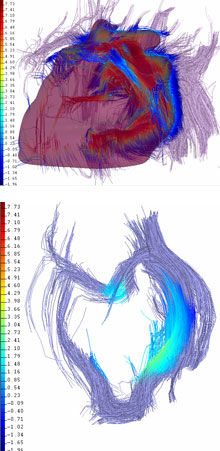Being treated for a brain tumor is scary enough, but if patients survive the surgery, radiation and chemo, they often have to take daily steroids to reduce swelling that can occur in the brain.These drugs have the potential to cause a number of unwanted side effects, but now there is a new option that is much safer.
if (self[‘plpm’] && plpm[‘Mid-Story Ad’]) document.write(‘
| ‘);if (self[‘plpm’] && plpm[‘Mid-Story Ad’]){ document.write(plpm[‘Mid-Story Ad’]);} else { if(self[‘plurp’] && plurp[’97’]){} else {document.write(”); } }if (self[‘plpm’] && plpm[‘Mid-Story Ad’]) document.write(‘ |
‘);When Paul Glover was diagnosed with a brain tumor, he never thought he would still be alive ten years later, and doing so much.
“What everybody told me is, ‘Yeah, life is over, pretty much,’” said Glover.
After surgery and chemo, Paul’s outlook was good, but the swelling in his brain took a toll on his body and caused neurological damage. Paul had to take steroids to fight it, but the side effects were harsh.
“… I didn’t feel like living. I couldn’t walk and half the time I would fall,” explained Glover.
Steroids caused him to gain nearly 80 pounds, and even forced the avid hunter into a wheelchair. The drugs can also cause bone loss, muscle weakness and anxiety.
So Paul was thrilled when he heard about a clinical trial that was testing a new therapy to replace steroids.
HCRF is the first agent in 40 years that was developed for brain tumor swelling.
“We are getting good, good results with some astonishing results in certain patients,” said Dr. Nicholas Avgeropoulus, from the Florida Hospital Cancer Institute.
When injected, HCRF works by stopping fluids in the brain tissue and reducing pressure in the skull. It even helps the body naturally produce its own steroids to reduce the swelling, without the side effects.
“The quality of life is such an important and understated factor in patients going through cancer treatment,” explained Avgeropoulus.
Something Paul knows all too well, now that he is off steroids and on the new drug.
Glover said, “Getting off steroids was wonderful. I cannot describe it … a big deal!”
Patients in the clinical trial inject the drug two times a day, and side effects may include redness.
Right now, researchers are enrolling patients for phase three of the clinical trial at about 35 centers around the country.
As reported in WNDU.om
